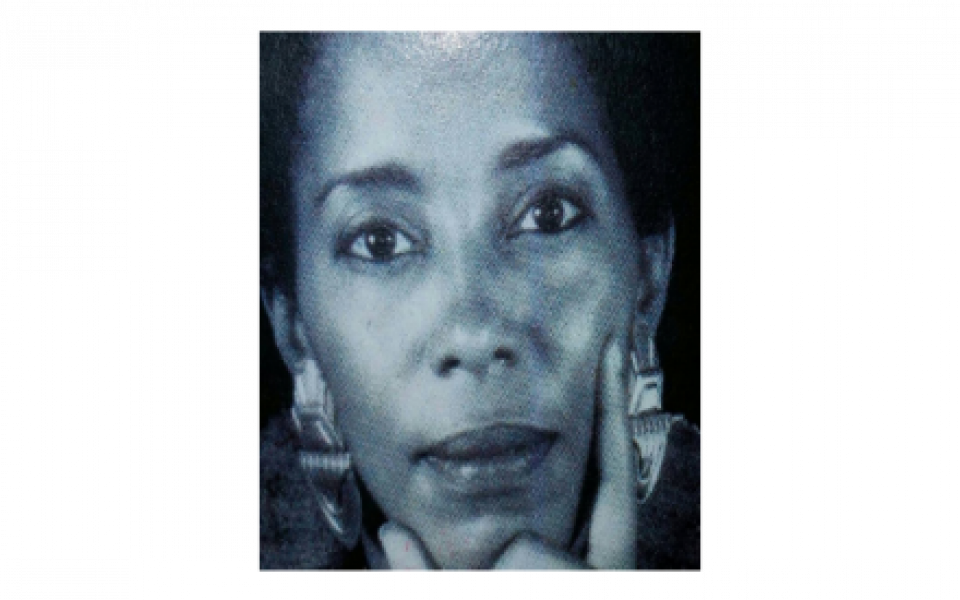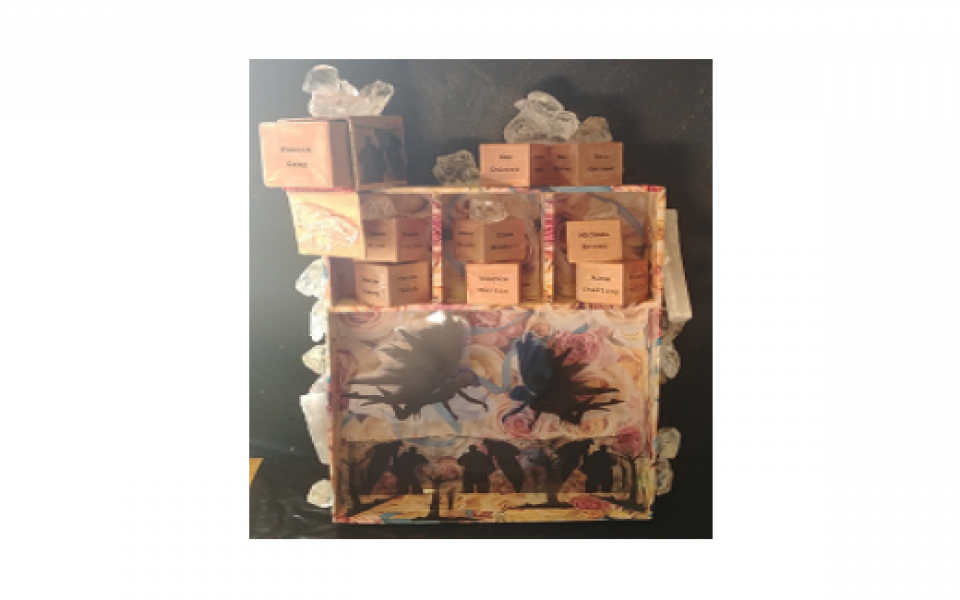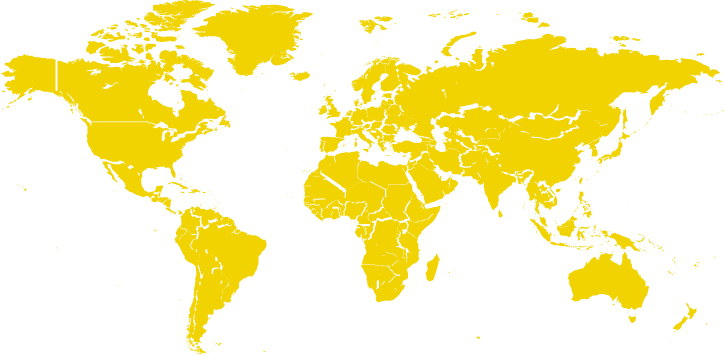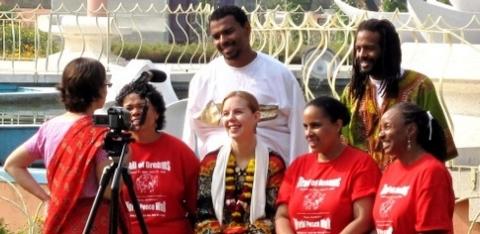In honor of Black History Month, we’re bringing you the stories of these three remarkable women and the work they do for their communities as they strive to bring about peace and harmony. Part one of our series tells the story of Lennet Partlow-Myrick.

This is part one of our three part mini-series highlighting the work of influential women of African descent in the United Religions Initiative North America network. You can click here for part two and here for part three.
By Joshua Broadwell
Much like the art she creates, Lennet Partlow-Myrick is a multi-layered individual. She works as a literature professor with Loyola College and holds mindfulness and intentional thought classes. But she also uses her creative ability to depict important social problems in thought-provoking ways, reaches people's inner selves through her interactive art, and is an active part of the Trail of Dreams Peace Walk, a URI Cooperation Circle.
Partlow-Myrick felt something different in her from a young age, but she couldn’t quite identify what it was. As a child growing up in Baltimore, a city full of people from different denominations and traditions, she was fascinated by the ways other people worshipped and wanted to know more. “I was very lucky. I grew up in a devoted Black Baptist home, but my mother let me explore other faiths without any issues,” she recalls.
As interested as Partlow-Myrick was in other religions and their equality, she never really considered interfaith work as her calling — until one particular summer when she and a group of friends went on a life-changing hike down the Appalachian Trail on a journey they called The Trail of Dreams. Partlow-Myrick says the adventure was conceived from a desire to help young people get back in touch with their dreams and live for the present and the future.
But it turned into something else completely. “I realized race and faith were all social constructs and that the important thing was to try and reach the person underneath all that.” This was the first time she realized her talents, interests, and experience all converged in interfaith work.
Partlow-Myrick’s work spans a variety of genres, depending on what inspires her at the time — and what she believes will speak to others. One recent focus is crystal clusters — groupings of different crystal types designed to express an inner picture — and their power to encourage inner reflection.

The juxtaposition of distinct and spiritual objects with shadowy, earthly ones defines this piece
“I see this piece representing my existence as a woman of African descent dealing with all these things happening on the horizontal plane [police brutality and male oppression] and also my life as a spiritual being on the vertical plane.” The recent piece, pictured below, captures that crossroads in a variety of ways, depicting the human elements of fear, grief, and confusion connected to police brutality against people of African descent, but it also lifts all these things up to a higher level at the same time.
She knows her work is successful when she sees how it impacts people, saying “If my [art] touches people emotionally, if it inspires on any level, and if it is a catalyst for meaningful conversations, then I think that's success on a certain human level.”
Whether she inspires conversations about the social constructs of race, promotes strategies for community harmony, or encourages deeper personal reflection, Partlow-Myrick says the foundation of her work is reaching the common spiritual foundations all people share, pushing aside potential influences that may arise from differences in color and beliefs. That, for her, is interfaith work.


